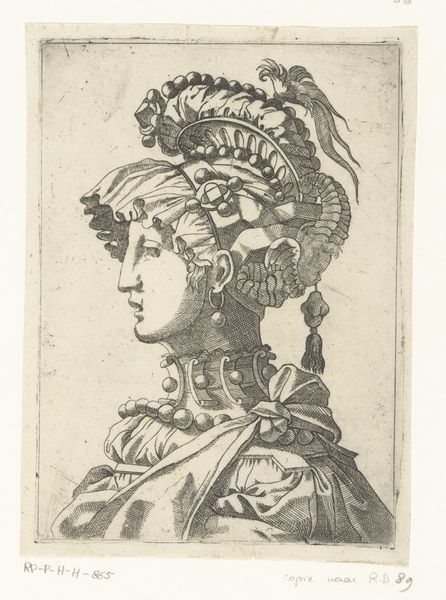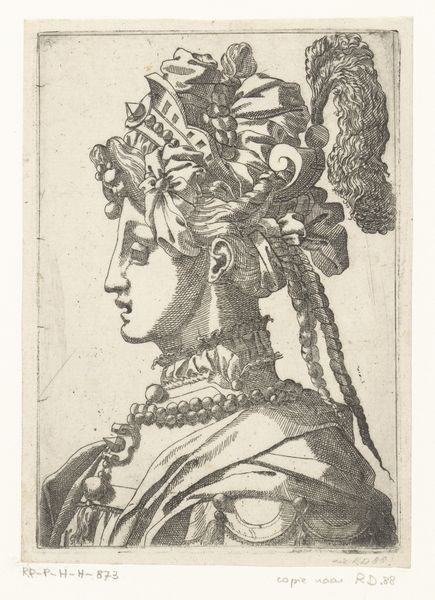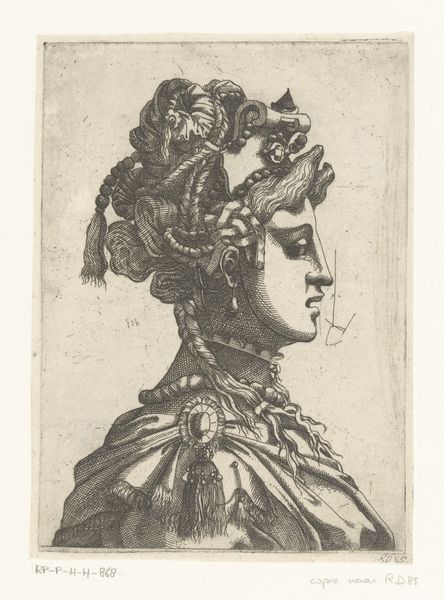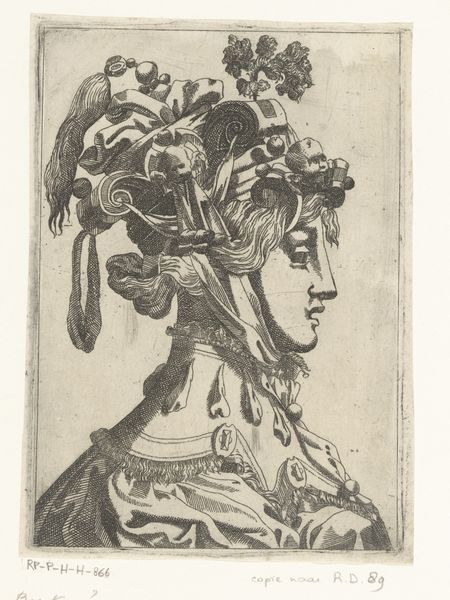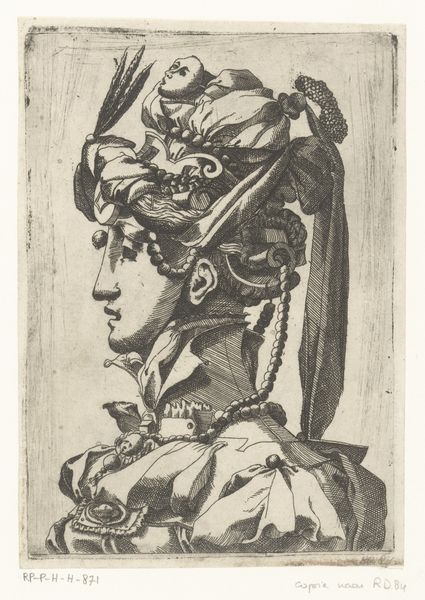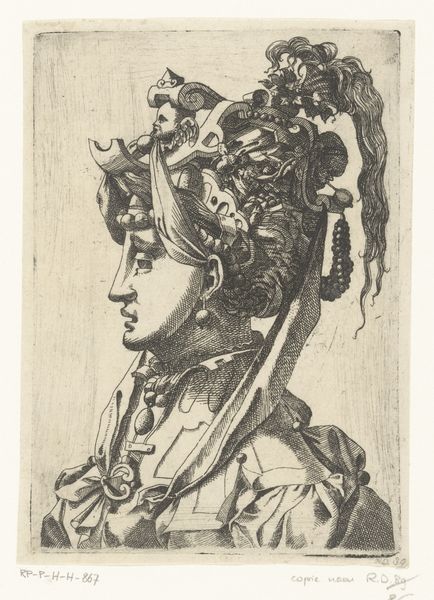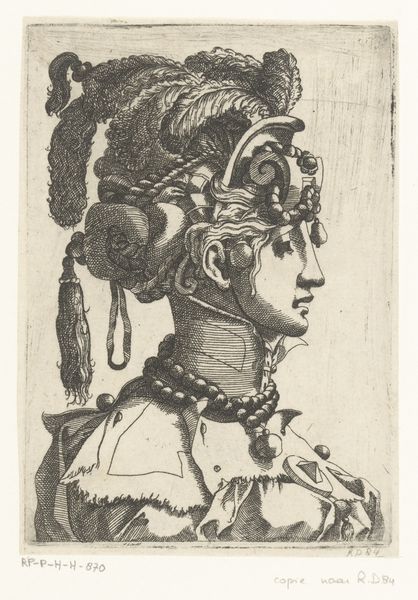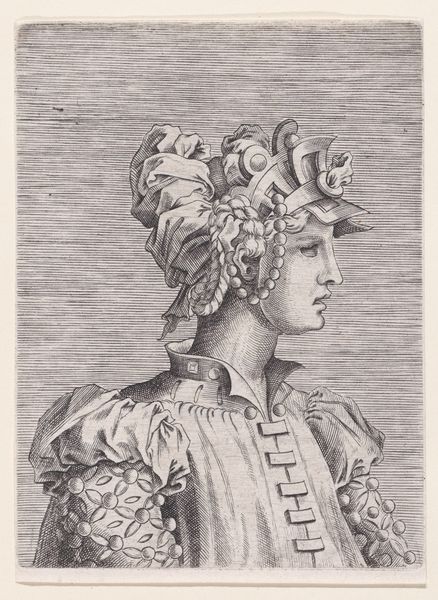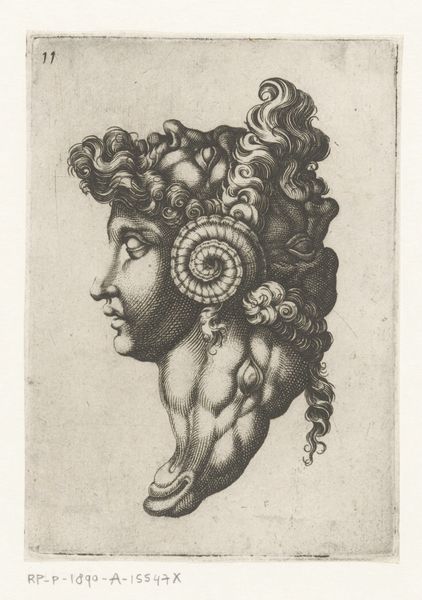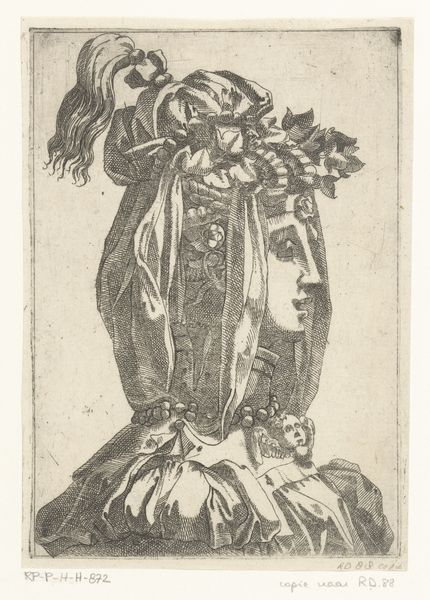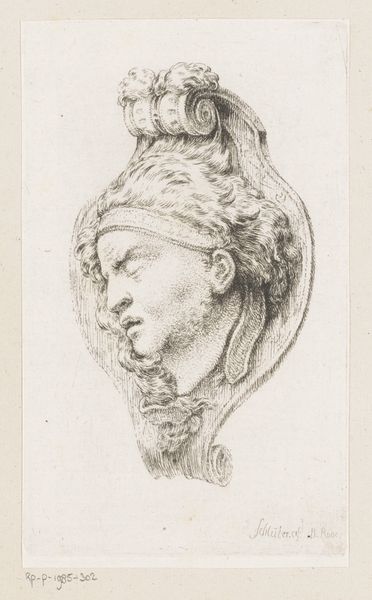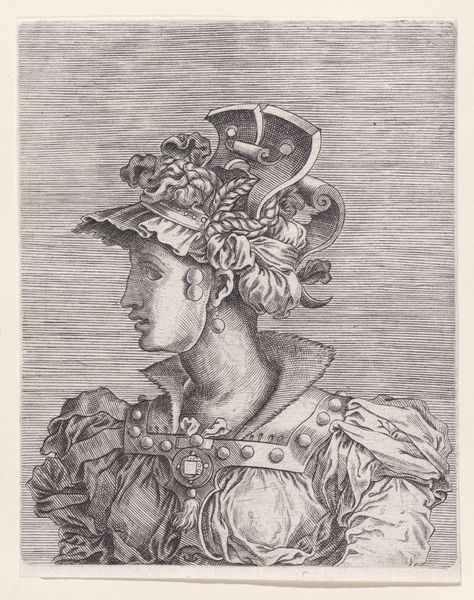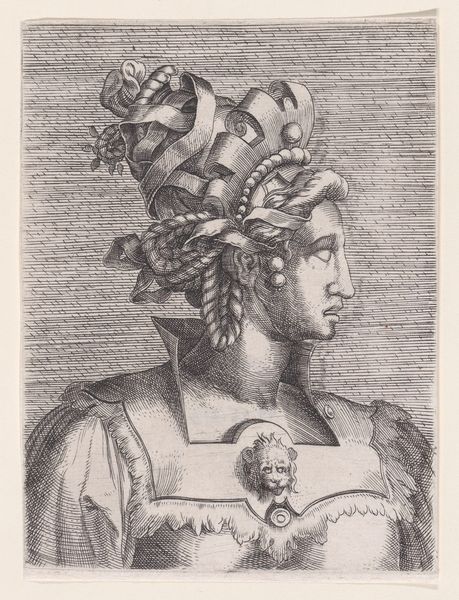
print, engraving
#
portrait
# print
#
old engraving style
#
mannerism
#
figuration
#
line
#
history-painting
#
engraving
Dimensions: height 153 mm, width 108 mm
Copyright: Rijks Museum: Open Domain
Curator: This engraving, attributed to an anonymous artist working sometime between 1535 and 1598, is titled "Vrouw met masker en fantasie hoofdbedekking"—"Woman with Mask and Fantasy Head Covering." Editor: My first thought? Elaborate doesn't even begin to cover it. The level of detail, particularly in the headdress, is extraordinary. And the shading gives it so much depth, considering it's just lines. Curator: Indeed. The density of line work signals this piece’s place in the Mannerist tradition, where visual complexity served as a hallmark of intellectual and artistic prowess. It invites us to explore questions of performance, identity, and the way social roles were materially constructed in the late Renaissance. The choice to use the printmaking medium itself speaks to these shifting power dynamics. Editor: The texture really is something, especially when you consider the material reality. The labour that went into the original engraving, all those precisely cut lines in the metal, that labor allows for potentially thousands of impressions to circulate images and ideas through broad social networks. It's an example of how a single artifact of artistic labor gains incredible social reach and impact. Curator: Precisely. What are we to make of the ornament on the woman’s clothing, the small human face looking out at us from her chest, literally incorporated into her garments? Consider the role that clothing played as a visual and material signifier in early modern Europe; dress communicated position and privilege. Is the integration of faces into garments a statement of power or are those incorporated figures acting as ornamentation, dehumanized in a similar way to later imperial displays of "exotic" people, like Sarah Baartman, exhibited as if she were an artwork? Editor: That really complicates how I see this print. Focusing on the materials alone made it seem like just another historical piece that’s far removed from current day exploitation of human beings, but your perspective adds another layer and context that needs to be considered. I wonder if these portraits-turned-ornaments were a type of forced labor within noble houses. I’m certain of the cost of those embellishments whether financial or not. Curator: That is part of what makes these historical items still able to provoke reflection on power dynamics, material inequality, and identity within an historical context. Editor: It brings me back to consider how materials are extracted and the human cost, the labour and global movement that enables art production today.
Comments
No comments
Be the first to comment and join the conversation on the ultimate creative platform.
